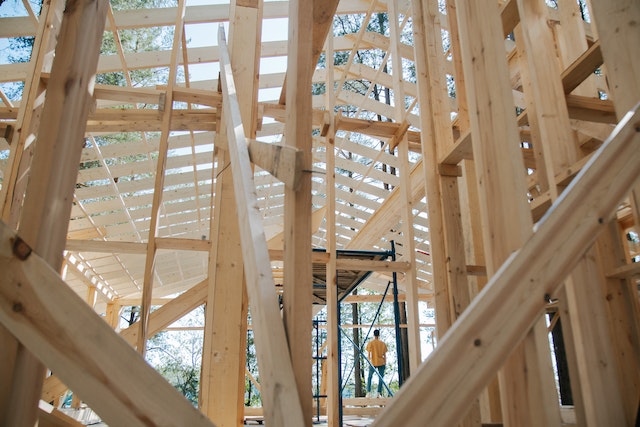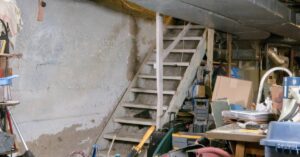
House frames are typically constructed with wooden studs and joists. These framing materials do not provide much structural support, so additional reinforcement is necessary to prevent structural failure of your home. The type of framing material used depends on the type of building being constructed and local building codes. Most homes were built using wood studs and joists, but steel-framed buildings are becoming more common for new construction because they require less maintenance over time than wood-framed homes.
Support Porch Railings
The solution is to use a lattice to support the railing. This material can be used as a base for the railing, or it can be used to attach the railing directly to concrete posts. Since this lattice is much cheaper than wood, it makes sense that you’d want to use it as a base for your porch railings instead of just throwing up some sturdy posts and attaching your porch canopy with nails.
Another great option for ensuring sturdy and long-lasting porch railings is to work with professionals who specialize in construction and home improvement. South Lincs Construction offers expert solutions for installing durable railings that not only enhance safety but also add to the aesthetic appeal of your home. Their experience in working with various materials, including wood, metal, and composite options, ensures that your porch railing is both stylish and structurally sound.
Sill Plate
The sill plate is a horizontal piece of wood that sits on the foundation and supports the weight of your house. It should be 3 inches thick at least and bolted to the foundation with lag bolts (longer than normal screws) at every 16-inch seam. This will prevent moisture from getting into your home through cracks between the sill plate and foundation.
When installing the sill plate, ensure its level and centered over the foundation. If your house isn’t plumb (straight up and down), install shims under the sill plate until its level.
Attach Garage Door Brace
To attach the brace to the garage door, you must drill pilot holes and use screws and a screwdriver. If your door is metal, use a drill bit that’s no smaller than 1/2 inch; if it’s wood or fiberglass, go with a 3/8 inch bit instead. Take care when drilling, so you don’t damage any other part of your house.
Once you have finished this step, all that remains is attaching the brackets using screws long enough to reach through both pieces of wood or fiberglass, leaving 1/8 inch exposed on each end. Once these are in place, you should look at them from different angles before placing them exactly where they need to go.
Add Column Support
Adding column support to your house will give it more stability and help prevent collapse. Columns are vertical supports that are usually made of steel. Columns can be attached to the wall with bolts, or they can be attached to the floor with screws.
Columns should be able to hold at least 10 pounds per square foot of horizontal surface area, equivalent to two adults standing on top of each other’s heads.
Steel Stud Framing
Steel studs are an excellent alternative to wood in residential construction. They are sturdy and can support walls and ceilings more efficiently than their wooden counterparts. Steel framing has been around for decades, but it has only recently become a popular choice for homeowners. Many people choose steel over traditional wood framing because of its superior strength, lower cost, and ease of installation.
Steel studs are made from hot-rolled or cold-rolled steel bars that have been cut into 2 feet by 4 feet (60 cm x 122 cm) panels that fit together to form walls—similar to wooden studs. However, unlike wood-framed houses where walls must be built separately and then connected with drywall or plywood panels afterward, steel-framed homes typically come with pre-fabricated wall panels already installed on site before construction begins; this saves time during construction while ensuring your new home will be structurally sound right from the start.
Popular Materials for structural support of your home
Aluminum angle has become material in construction, used to reinforce the structure of a building. It is made of aluminum and steel, making it lightweight but sturdy. It’s used to provide structural support for beams and columns in your home.
It is also used to construct buildings that need to withstand high winds. it’s an easy material for builders to work with and can be cut into different shapes with a saw or jigsaw.
Conclusion
The house is the most important investment that you will ever make. It is not only your home but also an asset for future generations. You have to ensure that it is structurally supported and safe for everyone living there.


